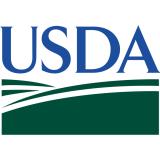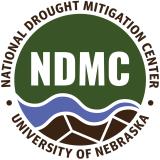Severe Drought Expansion and Heat Concerns in the Upper Midwest
Key Points
- Severe drought (D2) has expanded across the Upper Midwest, now affecting portions of Michigan, Wisconsin, northern Illinois, Iowa, and Minnesota. Moderate to severe drought (D1-D2) covers 70% of Michigan, 57% of Iowa, 46% of Minnesota, 34% of Wisconsin, and 9% of Illinois. Overall, 27% of the Midwest region is in drought.
- Drought impacts are beginning to intensify in the Upper Midwest, including wildfire risk, water supply concerns for agriculture, municipalities, and landscaping, and crop stress due to a lack of soil moisture. Municipal water supply concerns are impacting western and central Iowa, where drought has been an issue since summer 2020.
- NOAA’s short-term outlook for June 18-24 calls for a continuation of hot and dry conditions across the Midwest, which will continue to dry soils and make drought issues persist or potentially worsen across the Upper Midwest.
- Summer outlooks (June-August) are leaning slightly towards the potential for above-normal temperatures. With this potential for extreme heat and the current water deficits, it is likely that drought conditions will persist throughout summer. Existing drought issues like increased fire risk, inadequate soil moisture and increased stress for crops and landscapes, and limitations for municipal water supply are expected to continue in drought-affected areas.
Current U.S. Drought Monitor map for the Midwest as of June 8, 2021.
The U.S. Drought Monitor is updated each Thursday to show the location and intensity of drought across the country. Drought categories show experts’ assessments of conditions related to dryness and drought including observations of how much water is available in streams, lakes, and soils compared to usual for the same time of year.
U.S. Drought Monitor Categories
Current U.S. Drought Monitor map for the Midwest as of June 8, 2021.
The U.S. Drought Monitor is updated each Thursday to show the location and intensity of drought across the country. Drought categories show experts’ assessments of conditions related to dryness and drought including observations of how much water is available in streams, lakes, and soils compared to usual for the same time of year.
Current Conditions
- Severe drought (D2) has expanded across the Upper Midwest, now affecting portions of Michigan, Wisconsin, northern Illinois, Iowa, and Minnesota. Moderate to severe drought (D1-D2) covers 70% of Michigan, 57% of Iowa, 46% of Minnesota, 34% of Wisconsin, and 9% of Illinois. Overall, 27% of the Midwest region is in drought.
- The area with the greatest drought development and intensification over the spring 2021 season is centered over the areas adjacent to southern Lake Michigan and into eastern Iowa (Figure 1). This area only received 25-70% of normal spring precipitation (Figure 2). Temperatures were 2 to 4°F above normal across a majority of the Upper Midwest this spring, which contributed to the intensification of drought.
- Dry conditions and above-normal temperatures have dried the soils in many areas of the Upper Midwest in both the topsoil and deeper soils as well. In Michigan, 64% of topsoil is rated as short or very short according to the USDA, which is a 27% increase since last week. Stations in the Illinois Climate Network in northern Illinois have seen a sharp decrease in topsoil moisture recently, and a more steady decrease in deeper soils.
- Streamflow conditions from the USGS show widespread below-normal streamflow values across the Upper Midwest states, particularly across Michigan, northeastern Illinois, southeastern Wisconsin, northern Minnesota, and west-central Iowa.
- During the spring months, Great Lakes water levels typically rise due to increased precipitation and runoff. However, the recent drier conditions led to well below average seasonal rises during the spring. Lake Michigan-Huron experienced a record low change in water levels during this time.
Impacts
- Drought impacts are beginning to intensify in the Upper Midwest, including wildfire risk, water supply concerns for agriculture, municipalities, and landscaping, and crop stress due to a lack of soil moisture.
- Michigan and Minnesota have been dealing with an increased risk for wildfire for a couple of months now, and as a result, burn bans have been in place in some areas since early April. Just this past week, there were two wildfires in Superior National Forest in Northern Minnesota.
- Water supply concerns are impacting western and central Iowa, where drought has been an issue since summer 2020. Municipalities near Des Moines and Cedar Rapids are beginning to store and/or limit water use.
- In Michigan, fruit growers irrigated in early June, which is the earliest those fruit growers could remember irrigating. However, the lack of rain led to lower disease and fungal pressure on fruits. The exception was powdery mildew which was more prevalent this year due to the dry spring.
- While the drier weather was advantageous planting, crops are showing early season stress as a result of the dryness and warmer temperatures. Some farmers are worried that without rain, there will be a reduction in yield. Despite the issues, a majority of crops in the Upper Midwest are reported to be in fair, good, or excellent condition, although there are some concerns over the condition of hay in Minnesota.
- Chicago and surrounding areas have been feeling the impacts as well. Urban landscapes like trees, lawns, shrubs, and plants are having a difficult time surviving unless adequately watered, particularly those that are newly planted.
Figure 1: U.S. Drought Monitor Change Map (13-Week Map Since March 9, 2021)

Figure 2: Precipitation Percent of Normal (Last 90 Days): March 9-June 6, 2021

Report your Drought Impacts through Condition Monitoring Observer Reports (CMOR):
Outlook and Potential Impacts
- NOAA’s short-term outlook for June 18-24 calls for a continuation of hot and dry conditions across the Midwest, which will continue to dry soils and make drought issues persist or potentially worsen across the Upper Midwest. The greatest chances for above-normal temperatures is in the western areas of the region. In the far eastern portions of the region (Ohio and Kentucky), there is a chance for below-normal temperatures. Below-normal precipitation is expected across the entire Midwest (Figure 3).
- For June overall, there is a greater chance for above-normal temperatures across most of the Midwest, with equal chances for below-, near-, or above-normal precipitation. There is a slightly greater chance for above-normal precipitation in the far Upper Midwest and the lower Midwest.
- Summer outlooks (June-August) are leaning slightly towards the potential for above-normal temperature. With this potential for extreme heat and the current water deficits, it is likely that drought conditions will persist throughout summer (Figure 4).
- Existing drought issues like increased fire risk, inadequate soil moisture and increased stress for crops and landscape, and limitations for municipal water supply are expected to continue in drought-affected areas. If rainfall does not come soon, some of these impacts will worsen, including more water supply issues, which could warrant more conservation measures.
Figure 3: 8-14 Day Outlook (Temperature and Precipitation): Valid for June 18-24, 2021


Figure 4: U.S. Seasonal Drought Outlook: Valid for May 20-August 31, 2021

For More Information
- NIDIS and its partners will issue future updates as conditions evolve.
- More local information is available from the following resources:
- The upcoming North Central U.S. Climate and Drought Summary & Outlook Webinar on June 17, 2021 will offer updated information about conditions, impacts, and outlooks.
Prepared By
Molly Woloszyn
NOAA/National Integrated Drought Information System (NIDIS)
Dennis Todey
USDA Midwest Climate Hub
Doug Kluck
NOAA/National Centers for Environmental Information
Ray Wolf & Central Region Headquarters
NOAA/National Weather Service
Mike Timlin
Midwestern Regional Climate Center
This drought status update is issued in partnership between the National Oceanic and Atmospheric Administration (NOAA) and the U.S. Department of Agriculture (USDA) to communicate a potential area of concern for drought expansion and/or development within the North Central U.S. based on recent conditions and the upcoming forecast. NIDIS and its partners will issue future drought status updates as conditions evolve.








